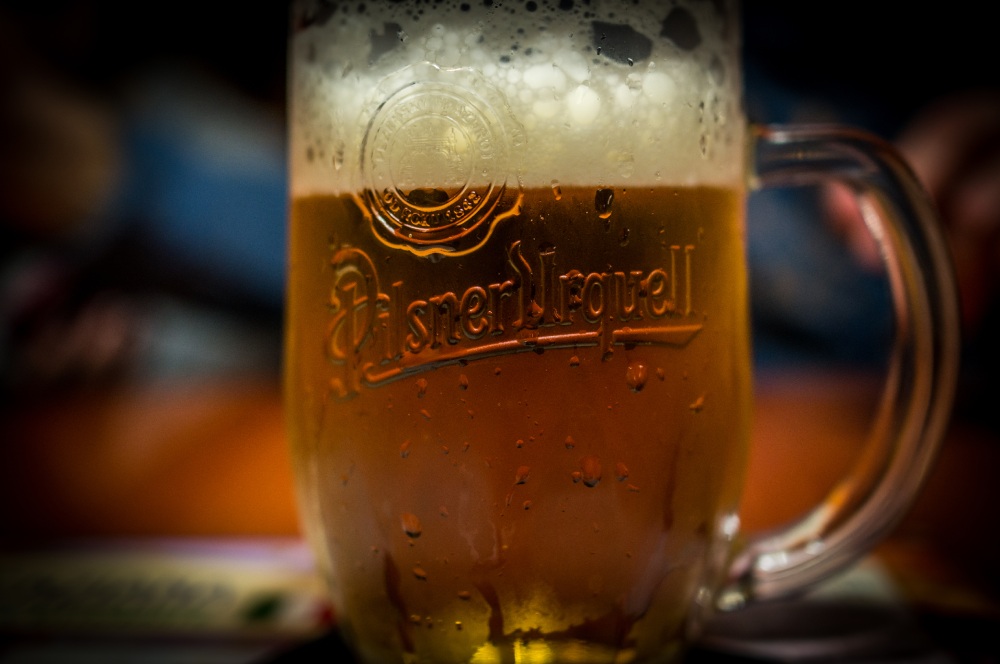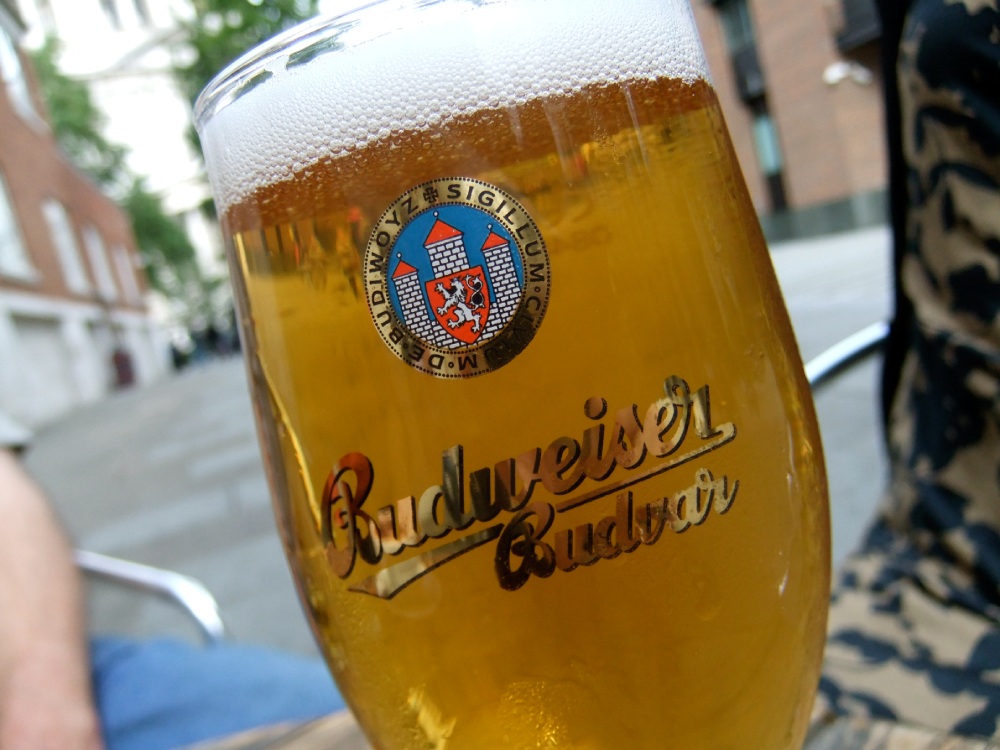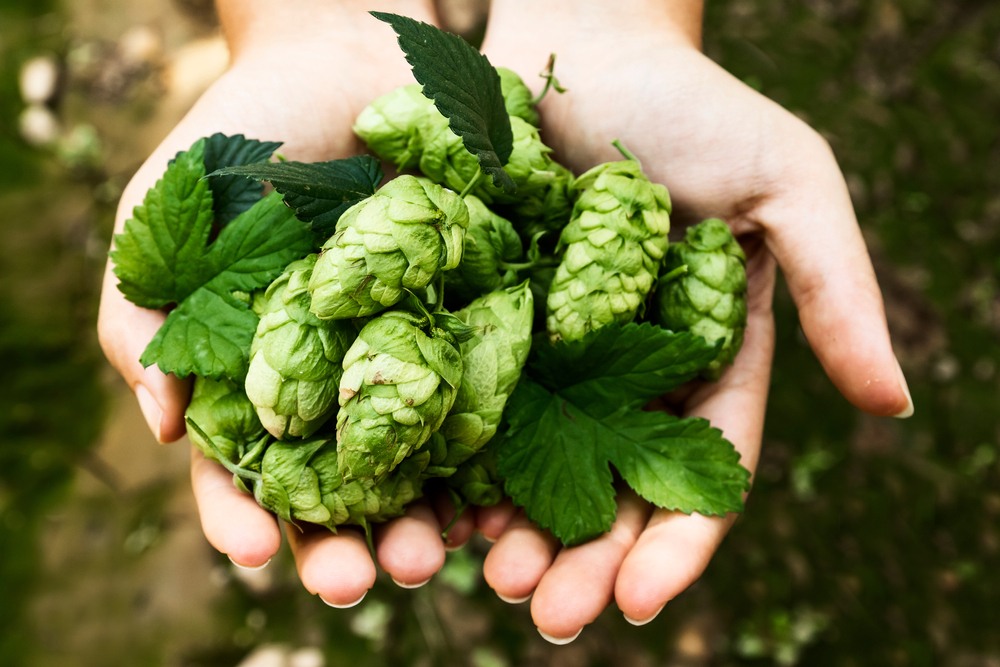What is Pilsner? In this article, you will learn interesting facts about pilsner.
Pilsner beer is a popular type of pale lager, known for its golden color and crisp, refreshing taste. Originating in the Bohemian city of Plzeň, the world’s first pale lager was produced by Pilsner Urquell Brewery in 1842, revolutionizing the brewing industry at the time. Since its creation, Pilsner beer has become a favorite of drinkers worldwide, perfect for enjoying on a sunny day or anytime a light and crisp beverage is desired.
The history of Pilsner is intriguing, as it was named after the Czech Republic town of Plzen, where it was first brewed. The town has a rich history of beer brewing, dating back to 1307. Pilsners today are characterized by their complex yet clean flavor, with a subtle balance of bitter hops and malt, making them the ultimate refreshment for beer enthusiasts.
There are various types of Pilsner beers, each representing diverse regional styles and tastes. They typically have an alcohol content between 4% and 5.3% ABV, bitterness levels ranging from 30 to 40+ IBUs, and a color between 3 and 7 on the SRM scale.
Table of Contents
Origin of Pilsner

The history of Pilsner can be traced back to the Czech city of Pilsen in the early 19th century. Located in the western Bohemia region, this city is known for its beer brewing traditions that date back to 1307. However, it was in 1842 when Josef Groll, a Bavarian brewer, revolutionized the beer industry with the creation of the first Pilsner beer.
At the time, the citizens of Pilsen were dissatisfied with the taste of local beers, which led to the foundation of a new brewery called Měšťanský pivovar Plzeň. Josef Groll was entrusted with the task of brewing a better beer. By combining local ingredients like soft water from Pilsen and pale malt, along with hops from the Žatec region, Groll was able to create a golden and sparkling beer that would later become known as Pilsner.
The new beer was an instant success, thanks to its smooth, full-bodied flavor and appealing golden color, which made it stand out from the darker and heavier beers of the time. Pilsner’s distinct characteristics were achieved by using a unique bottom-fermentation process known as lagering, which resulted in a clear, crisp, and refreshing taste that quickly gained popularity.
In the years to come, the popularity of Pilsner spread beyond the borders of the Czech Republic, and today, it remains one of the most well-loved beer styles worldwide. Pilsner is an essential part of the global beer landscape, with numerous breweries producing their own versions of this classic pale lager.
As the ancestor of today’s Pilsners, the original Pilsner Urquell continues to maintain a strong presence in the market. Its legacy continues to influence brewers and inspire the creation of new beer styles, attesting to the lasting impact of this groundbreaking beer from Pilsen, Bohemia.
Pilsner Brewing Process
Pilsner is a type of pale lager that originated in the town of Pilsen (Plzeň) in the Czech Republic. The brewing process of pilsner involves several key steps that differentiate it from other beer styles.
The first step in the brewing process is selecting the right ingredients. Pilsner relies on a delicate balance of malt, hops, yeast, and soft water. High-quality Pilsner malt is essential for developing the beer’s characteristic light color and subtle malt flavor. The use of noble hops, particularly Saaz hops from the Czech Republic, adds a unique floral and spicy aroma to the beer.
The water used in Pilsner brewing needs to be soft with low mineral content. This is because the soft water allows for a better extraction of the malt flavor and hop bitterness, resulting in a smoother and more balanced beer.
Next comes the mashing process. Pilsner often uses a traditional method called decoction mashing. This process involves boiling a portion of the mash and then returning it to the main mash tun, thereby raising the overall temperature. Decoction mashing helps to extract more malt flavor and creates a rich, golden color in the finished beer.
After mashing, the sweet liquid called wort is boiled with hops, and then the wort is cooled and transferred to fermentation tanks. Here, the wort is inoculated with lager yeast. Lager yeast, unlike ale yeast, ferments at colder temperatures, typically between 45-55°F (7-13°C), over a period of several weeks. This cold fermentation slows down the activity of the yeast, allowing for a cleaner, crisper-tasting beer.
Once primary fermentation is complete, the beer undergoes a process called lagering. Lagering involves the beer being stored at near-freezing temperatures for an extended period, generally between 4-8 weeks. This process helps to clarify the beer, remove any unwanted flavors, and improve the overall smoothness and drinkability.
In summary, the Pilsner brewing process involves a combination of carefully selected ingredients, unique methods like decoction mashing and cold fermentation, and a lengthy lagering phase that results in a highly drinkable, crisp, and flavorful beer.
Key Ingredients
Pilsner is a popular beer style distinguished by its golden color, effervescence, and clean taste. The key ingredients that contribute to its unique profile include malted barley, hops, water, and yeast. Let’s take a closer look at these elements and their role in the creation of this classic beer.
Malted Barley: Pilsners typically utilize low-protein Moravian malted barley, which is lightly kilned to produce a lighter color and a delicate flavor. The choice of barley is crucial, as it forms the backbone of the beer’s taste and appearance. Moravian barley is known for its high quality and ability to produce a crisp, golden beer.
Hops: One of the defining characteristics of a pilsner is its hop profile, and the incorporation of Saaz hops, a variety of noble hops, is essential. Saaz hops originate from the Žatec region in the Czech Republic and are celebrated for their subtle bitterness and spice. These hops add complexity and richness to the pilsner while maintaining an overall crisp and clean taste, without any fruitiness.
Yeast: Lager yeast is the preferred yeast for pilsner brewing due to its ability to ferment at lower temperatures, which imparts a clean flavor profile and contributes to the beer’s clarity. Lager yeast strains help accentuate the delicate malt and hop flavors, resulting in a well-balanced brew.
Water: The water quality plays a significant role in the brewing of pilsner, particularly in its birthplace – the city of Plzen in the Czech Republic. The water in Plzen is characteristically soft, with low levels of dissolved minerals. This soft water enhances the beer’s smooth and clean mouthfeel, adding to its overall appeal.
In summary, the unique combination of high-quality malted barley, Saaz noble hops, lager yeast, and soft water is what sets pilsner apart from other beer styles. These key ingredients work in harmony to create a beer that is simultaneously complex, rich, and refreshing.
Various Pilsner Styles
Pilsner, a type of pale lager, has its roots in the Bohemian city of Plzeň, where the first pale lager known as Pilsner Urquell was produced in 1842. Over time, this style of beer has evolved into several different forms, with various regional characteristics.
Czech-style Pilsner originated in the region now known as the Czech Republic. Characterized by medium to medium-full body, high carbonation, and tangy Czech varieties of hops, these pilsners typically have floral aromas and a crisp, bitter finish. Notable examples include Pilsner Urquell, Staropramen, and Budvar.
German Pils, also called German Pilsner, shares some characteristics with Czech-style pilsners, but is often lighter in both body and color. Featuring noble German hops, these beers exhibit a clean, refreshing taste with a slightly bitter finish. Popular examples of German Pils include Bitburger, König, and Jever.
Vienna Pils deviates from classic pilsner styles with its reddish-amber hue. Originating in Vienna, Austria, this style emphasizes malt flavor over hop bitterness. While not as well-known as Czech or German pilsners, Vienna-style pilsner still holds a special place in the pilsner family.
European-style Pilsner refers to pilsners produced throughout Europe that do not strictly adhere to Czech or German pilsner styles. These beers may have slightly different flavor profiles, hop varieties, or brewing techniques, but generally maintain the refreshing, crisp character for which pilsners are known.
American Pilsner is a modern take on the traditional European pilsner. Typically brewed with American hops, this style may have a more fruit-forward flavor profile while still maintaining the trademark crispness and bitterness of its European counterparts. Notable examples include Samuel Adams Noble Pils and Victory Prima Pils.
By exploring various pilsner styles, beer enthusiasts can appreciate the rich history and regional influences that have shaped this popular lager category.
Famous Pilsner Brands

Pilsner Urquell is considered the world’s first pale lager and the ancestor of today’s Pilsners. It was originally brewed in 1842 in the town of Pilsen, now in the Czech Republic. This iconic brand is known for its crisp, dry, and slightly bitter taste, as well as its golden color and heavy malt flavor. Its popularity has since led to a large variety of Pilsners available on the market today. Learn more about Pilsner Urquell here.
Budweiser Budvar is another famous Czech Pilsner with a distinctive taste profile that comes from a combination of Moravian malt, Žatec hops, and soft water from artesian wells. This beer is characterized by its rounded malty flavor and mild hop bitterness, making it an enjoyable and refreshing choice.
Stella Artois is a world-renowned Belgian Pilsner, famous for its skunky and slightly fruity flavor that is derived from Saaz hops. Stella Artois is known for being served in its signature chalice glass to enhance its aroma and flavor.
Germany is home to numerous well-regarded Pilsner brands, including Bitburger, Warsteiner, Flensburger, Jever, Krombacher, and Veltins. Each of these brands brings its unique characteristics to the table, showcasing the diversity and complexity of the Pilsner style.
- Bitburger is recognized for its balanced hoppy bitterness and approachable, easy-drinking nature.
- Warsteiner offers a mild and clean flavor profile with a hint of hoppy aroma and a smooth finish.
- Flensburger is characterized by its slightly fruity flavor and crisp, refreshing taste.
- Jever is known for its intense hops bitterness, prominent malt backbone, and dry finish.
- Krombacher provides a well-rounded, malty sweetness with a touch of bitterness that leads to a clean and refreshing finish.
- Veltins has a delicate balance of maltiness and subtle hoppiness that creates a crisp and enjoyable beer experience.
Overall, these famous Pilsner brands represent a wide range of flavors and brewing traditions, each one offering beer enthusiasts a chance to explore the full spectrum of this popular beer style. Explore more pilsner brands.
Flavor Profile and Characteristics
Pilsner is a type of pale lager that is known for its clean, crisp taste and refreshing finish. It is straw-colored with a dense, white head. The key components that contribute to its unique flavor profile include hops, light grain, and a hint of graininess in the aroma. The hop aroma and flavor are typically subtle and backed by clean malt notes reminiscent of bread, light toast, and mild honey.
The alcohol by volume (ABV) for a pilsner typically ranges between 4.6% and 5.3%. However, the flavor of alcohol is generally not detectable and thus doesn’t play a significant role in its overall flavor profile. The International Bitterness Units (IBU) for pilsners varies from 25 to 45, making them lightly to moderately bitter.
Pilsners are characterized by a balanced hop bitterness, which comes mainly from the classic Saaz hop varieties. These hops contribute to the spicy and earthy notes present in the beer. Citrusy, piney, and earthy American hops are considered inappropriate for this style. The spicy hop character is what sets pilsners apart from other lagers.
One of the main aspects that make pilsners so popular is their drinkability. The clean, bitter finish coupled with the light body makes this beer style the perfect option for those who want a refreshing drink with a moderate alcohol content.
In summary, the flavor profile and characteristics of pilsner beers are defined by their clean maltiness, spicy hop notes, subtle hop aroma, and refreshing drinkability. These traits make pilsners appealing to a wide range of beer drinkers, whether they are new to the world of craft beers or seasoned enthusiasts who appreciate the nuances of this classic style.
Pairing and Serving Suggestions
Pilsner is a versatile and crowd-pleasing beer, with a crisp, refreshing taste that goes well with a variety of dishes. One of the best things about pilsner is that it’s not overpowering, allowing you to experience the full flavors of your food.
When it comes to pairing pilsner with food, it’s an excellent choice for lighter dishes, like chicken and fish. The clean and crisp profile of the beer cuts through the creaminess and richness of sauces or dips, providing balance to your meal. Another great pairing option is fried food since the beer’s high carbonation helps cleanse the palate between bites of greasy dishes. Additionally, spicy foods are a great match, as pilsner’s bitter finish can help tame the heat and accentuate the dish’s flavor.
To ensure an optimal pilsner experience, choose the right glass for serving. A pilsner glass is traditionally tall, slender, and tapered, which helps to showcase the beer’s color and enhance its aroma. This type of glass also keeps the beer cold and retains the head, allowing drinkers to enjoy the full sensory experience of the classic beer style.
In terms of temperature, it’s best to serve pilsner slightly chilled, around 40-46°F (4-8°C). This allows the flavors to shine without being muted by the chilliness.
In summary, when pairing a pilsner with your meal, choose light dishes like chicken or fish, or consider spicy or fried foods to bring out the best in both the beer and the dish. Always serve pilsner in a proper pilsner glass at the recommended temperature for maximum enjoyment.
Pilsner in the Craft Beer Scene
The popularity of Pilsner has extended from its origin in the town of Pilsen, in the Czech Republic, to the craft beer scenes worldwide. This classic beer style, notable for its crisp, refreshing taste, and lightly hopped profile, is enjoyed by many today. The Pilsner Urquell brewery, which was founded in 1842, was the cornerstone of this beer style’s phenomenal success.
In the craft beer scene, Pilsner has emerged as a versatile and highly sought-after option. Craft breweries in various countries, especially in the United States, have been experimenting with different interpretations of this traditional brew. The American Pilsner often showcases regional hops and malts, lending a distinctive character to these reinterpretations.
One reason for the popularity of Pilsner among craft beer enthusiasts is its sessionable nature, with an alcohol by volume (ABV) range of 4.2-5.8%. Additionally, the delicate balance of Pilsner malt, Saaz and Hallertau noble hops, along with bottom-fermenting Pilsner yeast, contribute to its seductive complexity and refreshing drinkability.
As Pilsner continues to conquer the craft beer world, it adapts to regional tastes, techniques, and ingredients, enriching its already diverse history. From Bohemian Pilsners that exhibit significant differences within their native regions to the lighter-bodied and crisp German Pils, this classic beer style owes its enduring success to its inherent adaptability and universal appeal.
Historical and Cultural Influence
The history of Pilsner beer can be traced back to the town of Pilsen (Plzeň) in the Czech Republic during the early 19th century. The Pilsner Urquell brewery created this unique pale lager in 1842, which became an instant success due to its crisp and refreshing taste. The Bohemian town of Pilsen is considered the birthplace of Pilsner, a style that would go on to influence countless other beers around the world.
Bohemian brewers played a significant role in the development of Pilsner, as they combined their brewing expertise with Bavarian techniques. They utilized soft water from the region’s caves, which helped maintain the desired consistency in the brewing process. The introduction of lager yeast, different from the ale yeast used in many other beers, further distinguished Pilsner as a distinct style.
Another important aspect of Pilsner’s historical evolution was the role of the city of Prague. As the capital of the Czech Republic, Prague has been a hub for brewing culture and expertise. The city saw a thriving market for the new Pilsner beer style, which rapidly gained popularity not only in Prague and the Czech Republic but also across Europe and the world.
Pilsner’s cultural influence is visible even in its label designs. The traditional label often showcases the origin of the beer, proudly displaying its connection to the town of Pilsen, or featuring images of the breweries and caves from which the beer was first produced. This visual connection to the beer’s roots not only adds to the authenticity of the Pilsner brand but also strengthens its association with the rich brewing heritage of Bohemia and the Czech Republic.
In summary, Pilsner beer has played a significant role in shaping the history and culture of beer brewing. Its origins in the Bohemian town of Pilsen, the adoption of Bavarian techniques, the unique use of caves and lager yeast, and the strong connection to the city of Prague all attest to the longstanding and profound influence of this refreshing pale lager on the beer world.



